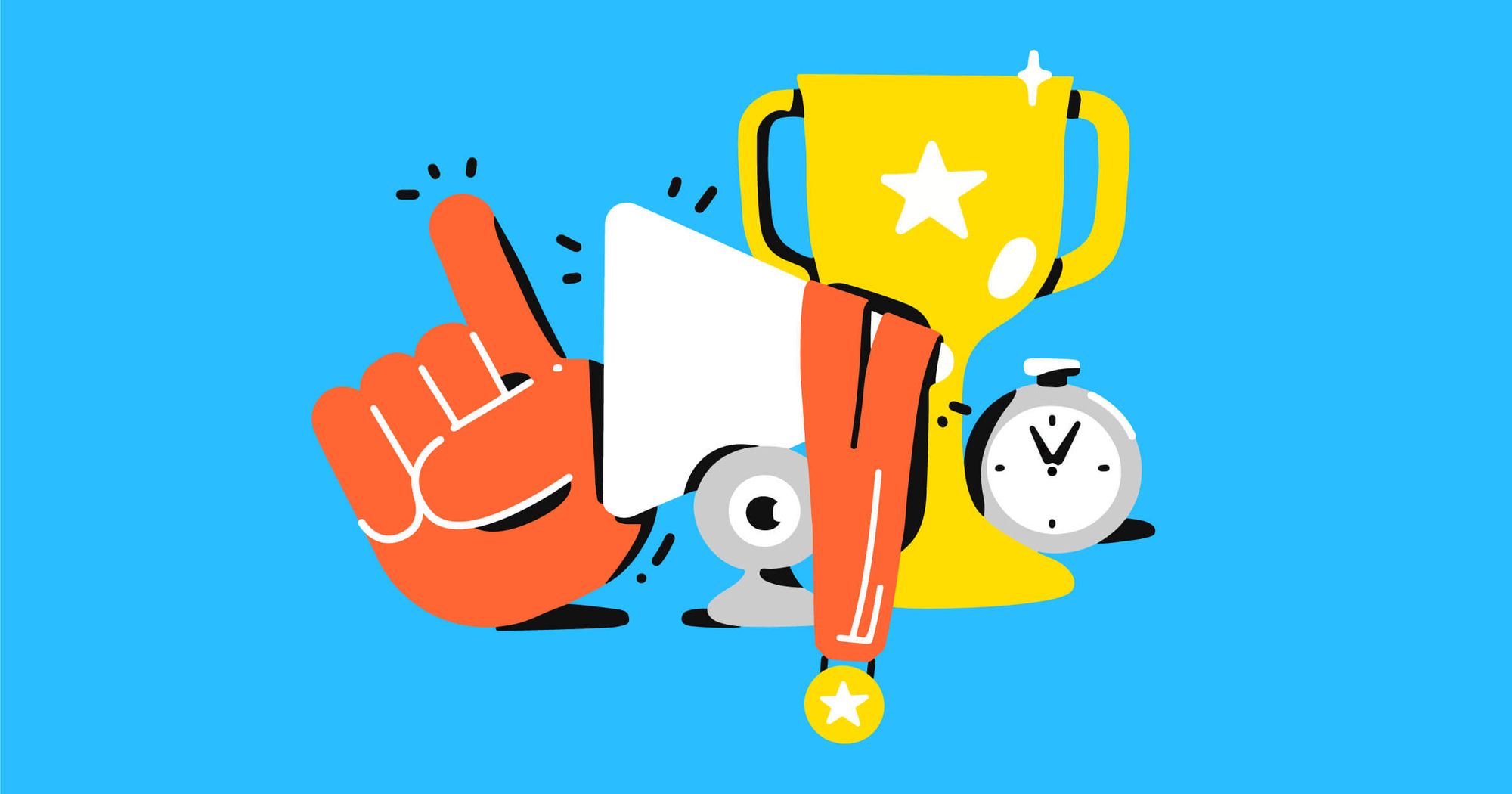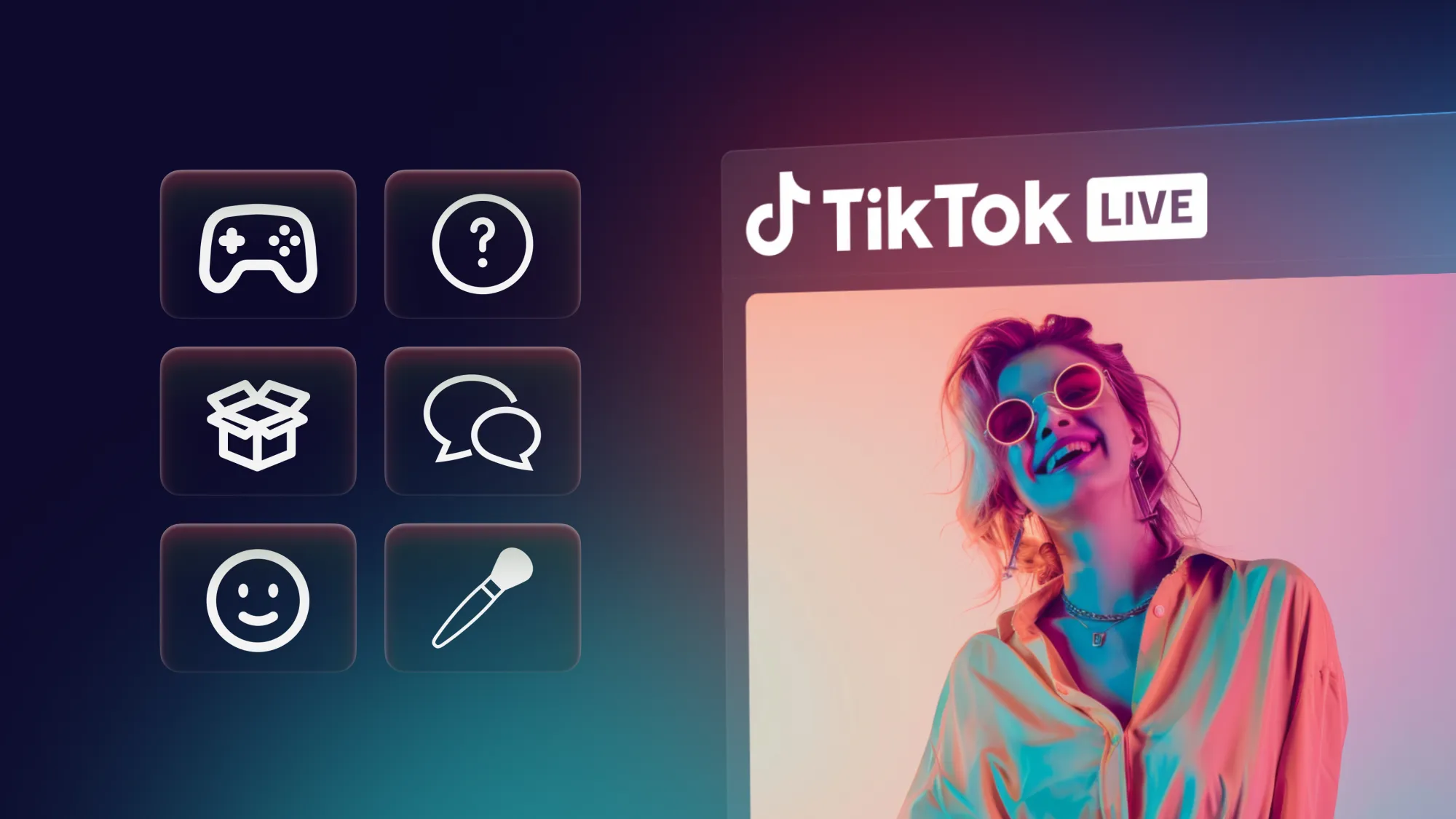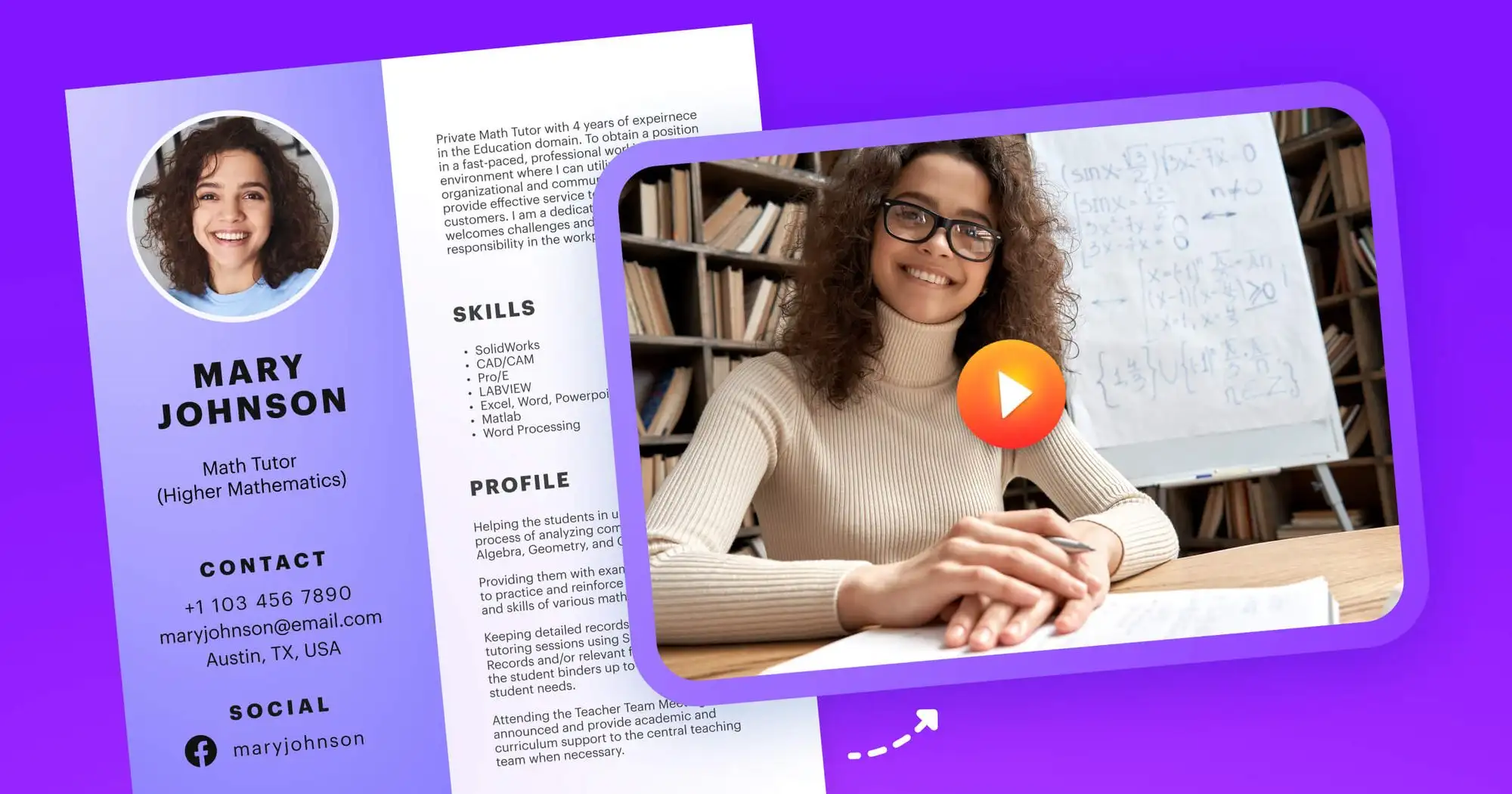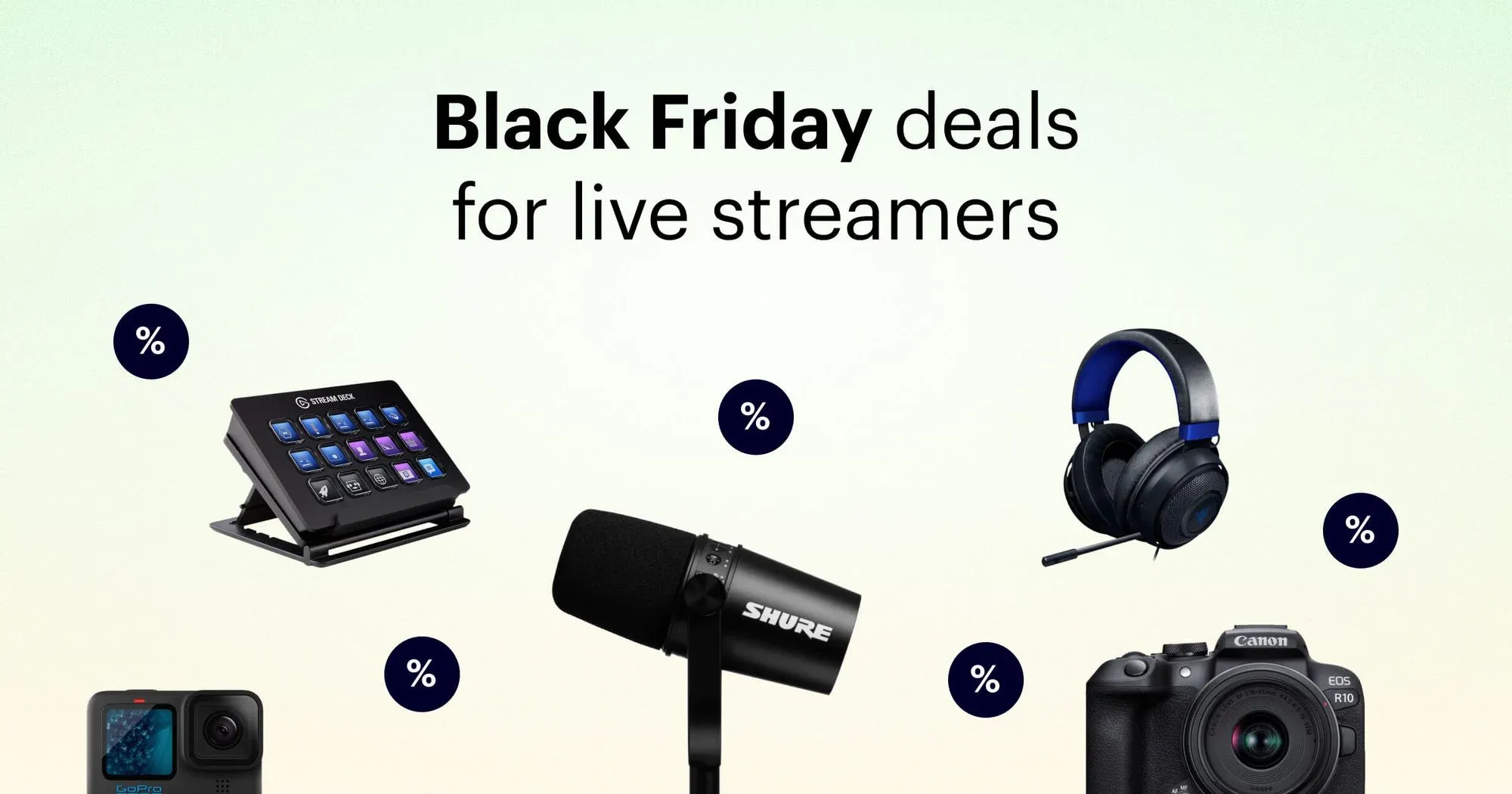The time, effort, and money you invest in organizing and producing an online event, be it a webinar, conference, or any other broadcast, only pays off if someone’s there to see it all happen. That’s why you engage in event promotion, to ensure your online events attract plenty of people — or at least all the people that count to you the most.
Sounds like a tall order? Don’t worry, it’s not. Learning how to promote a webinar is easy, and it starts with building a list of tried and tested audience-attracting methods and techniques. We’ve compiled the best tips to help you get your list started.
1. Optimize the registration page for maximum effectiveness
Your registration page has two goals: to make registration attractive and to make it easy. Use visual content to boost anything from information retention to traffic.
Try to keep the forms simple, with the least possible number of fields. No one ever made a mistake by reducing the number of hoops people must jump through to register for an event.
2. Give your webinar promotion efforts enough time to work
By the time you’ve read this guide, you’ll see that there are lots of channels you can use when promoting webinars. As you plan the rollout, keep in mind that they’ll need time to work.
Generally, you should start with event promotion early and use the cheapest channels — social media and email marketing — to kick off the campaign a month before the event. Use paid channels a bit closer to the event, but give them at least two weeks to work their magic.
3. Use all the digital assets at your disposal to announce the event
The first rule in the “how to promote an event” handbook is that you can’t be both shy and an effective promoter. You must go all out on that first announcement and give it everything you’ve got.
That means that all the digital assets you have — a website, a blog, social media pages, mailing lists, directory listings, guest posting relationships — can be put to use to spread that initial word about your upcoming event.
4. Think beyond advertising — try to affect
“Think beyond advertising” sounds like the most advertising-y thing ever said. But that doesn’t mean it’s not true — simply going through the motions isn’t the best way to promote an event.
Your materials need to affect people. They need to warm people up to the idea of attending the event. They need to get people excited. They need to make people think your event is the place to be for learning or seeing whatever it is you want to show.
5. Be serious about engaging people, even before the event
One of the reasons why live-streamed content is popular is because it’s better at engaging audiences than on-demand content. You should use this fact to your advantage when promoting an event.
Behind-the-scenes live streams are a great and effective tool that can help you engage people before you launch the event. A short stream or two might do the trick, and you can leave them online to use later in the campaign.
6. Create a pre-event Q&A session with the audience
Now you’re taking out the big guns: live Q&A sessions take advantage of the most important trait of live streaming — its interactivity — to deliver uniquely engaging experiences.
You can use them to warm up the audience and let them contribute to the event in some way (take their questions). Q&As are also great for getting post-event feedback, so have them in mind for after the event, too.
7. Consider paid traffic
There are two things you should know about paid traffic. The first one is that you’ll need a budget for it. The second one is — it works.
If at all possible, consider placing some ads on Google Ads, Facebook Ads, or both. These two ad systems alone should help you cover a lot of ground for a price that doesn’t have to drain your budget.
8. Segment your audience for better targeting
Since you’re paying for these ads, you might as well get the most from them. Segment audiences and do your best to find the most effective messaging for each segment. Testing helps.
Some parts of your audience might be more attracted to different aspects of your online event, like the fact that it’s affordable, convenient, or requires no travel for attendance. Segmenting the audience lets you target these points in other forms of content, too.
9. Use remarketing to follow up on visitors who didn’t register
If you have a limited budget for paid ads and you’re managing to pull plenty of visitors organically to your registration page, remarketing could be the best place to spend your money.
With remarketing, you use paid ads to target the people who’ve visited your registration page but failed to convert. Just remember to follow the best practices for maximum effect and minimum creepiness.
10. Create a teaser video and use it to siphon traffic
Do you have a YouTube channel? No? Well, you better make one fast. While you’re at it, maybe pick up the basics of video production. You’ll need them to create a good teaser video to promote your webinar.
Video is powerful, teaser videos are short and relatively easy to make, and YouTube is the best platform to host yours. No further explanation needed.
11. Use communities
The most worn-out tenet of marketing, the one about going to where the audiences are, applies to online event marketing, too. If you want to reach an audience, you should go to places where they congregate.
There’s a group or a community for everything. You can find these communities on Facebook, Slack, or a number of other industry-specific websites, online message boards, and forums. Join a few, and network and promote your event there.
12. Create high-profile guest posts
Guest posts — articles you write and publish on third-party websites — are great for a number of promotional activities. They help you establish yourself as an industry figure, usually get you a backlink or two for your website, and maybe help you network.
For event promotion, guest posts have a different purpose: they communicate with your audience. Identify the websites they frequent the most and work your way into publishing an article there. Use the article to let people know about your event.
13. Put out a press release
Creating and sending out a press release is one of those basic marketing activities every event promoter has done more times than they care to remember.
Well, time to do it once again! To be sure it lands well, however, give your contacts in publications a heads-up. The more industry journalists covering your press release, the better.
14. Network at similar events
Networking counts for an awful lot when promoting events. Personal and professional networks can be incredibly important for attracting key audience members.
The best places to start networking your way to a bigger audience are the events that are like the one you’re promoting. Attend them online or offline; just make sure you use them to build an audience for your upcoming event.
15. Target important attendees individually
Getting an industry leader to attend your event can be a great boost for your promotional efforts. Attracting up-and-coming names in the industry will give your event an air of freshness. Bagging a celebrity can give you international coverage.
Some attendees are strategically important. It’s okay to devote more time to attract them, but for the best results, you’ll probably need to target them individually.
16. Generate buzz with a giveaway or contest
Nothing like a contest to create some buzz around your event, right? Giveaways, quizzes, and similar forms of online promotion are popular for a simple reason — they draw attention and increase reach.
If your webinar or event requires paid attendance, you can organize a giveaway of tickets. If not, you’ll have to come up with boons, bonuses, or rewards. Either way, be prepared to give something with a clearly defined value.
17. Promote your event on event listing websites
There’s a bunch of places online where you can list and promote an event. Some of them might handle ticketing, too, while others are barely more than message boards. The full range will take you from EventBrite to TellOnline.
Either way, you have nothing to lose by using these websites to promote your webinar. Don’t forget that Facebook, the biggest global social network, has its own event service.
18. Use industry influencers for event promotion
Industry influencers can do a lot to bring some limelight to your event. Even if they don’t attend it, a social media post here and there can make a big difference in the turnout for your webinar.
Sometimes, however, you should be prepared to shell out some money to work with industry influencers. At the very least, you’ll have to give them something in return for helping you out.
19. Partner with companies that aim at the same audience
Anyone who has access to the audience you’re targeting for your event is a welcome addition to your roster of resources. It doesn’t have to be an influencer — it can be a business that targets the same audience.
The only caveat is that you shouldn’t be in direct competition. But if you have complementary offerings, like if your webinar helps people use their product, you might be able to get them to join in on the effort to promote your event.
20. Let your attendees bring friends
Is there a better event ambassador than a person who is really keen on attending it? If you’ve gone to the length of drumming up that much excitement, you might as well let it work for you and let enthusiastic attendees bring friends.
This can work even if you’re charging for attendance. Simply give a discount for every additional person someone brings to your event.
21. Set up reminders
People are busy. You shouldn’t expect their lives to revolve around your event. You should plan for the opposite — that they’ll register for your event and then completely forget about it.
But that’s what reminders are for. Maybe the system you’re using to broadcast events or sell tickets for it allows push notifications or other kinds of messages. If not, simply send an email or a few — make it a countdown with custom-made content for each reminder.
22. Multistream your event
If you’re creating a paywalled event, you probably understand that the price will turn off some of the potential attendees. But if you’re going for the largest possible attendance, not only do you have to make the event free, you should also stream it to several platforms.
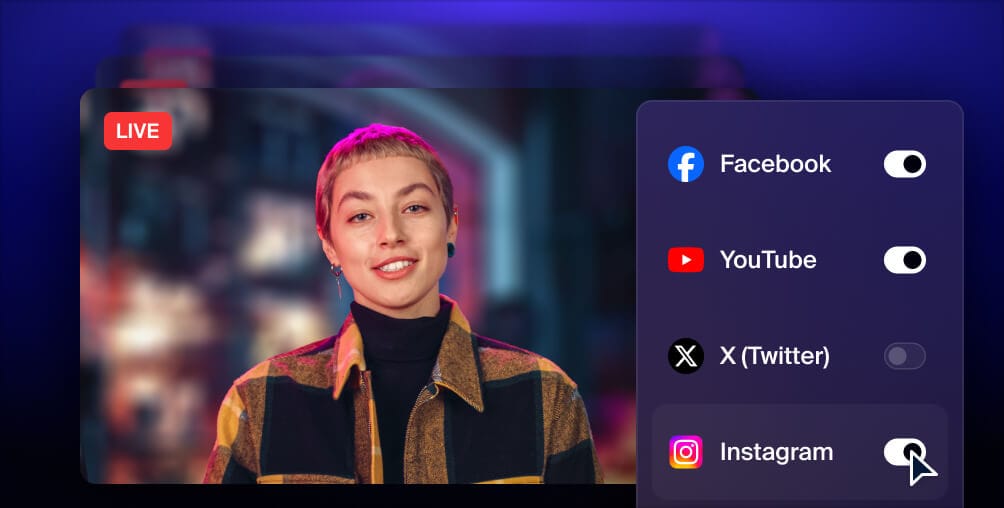
Get more views with multistreaming
Reach more people, and meet viewers where they like to watch. Live stream to YouTube, Instagram, Facebook, Twitch, X, TikTok, LinkedIn, and more at once.
This is called multistreaming, or simultaneous streaming to multiple websites. Thanks to it, you don’t have to put in the effort to bring all your audience segments to one place — you can stream to the platform they already like to use. To once again use the tired — but true — trope: multistreaming lets you stream where your audiences like to watch.
Let’s wrap it up
Producing an event and promoting are two completely different activities that can’t go without each other. So when the time comes to shift from production into event promotion mode, remember to set your priorities, budget carefully, and use as many of these 22 tips as you think will be effective in your situation.
Give multistreaming a good, long, consideration. The amount of effort it saves you can be huge. But that’s not even the best thing — if you choose to multistream with Restream, you’ll be able to set everything up in minutes without having to invest in additional software or hardware. When you decide to go for maximum reach, do it with Restream.


